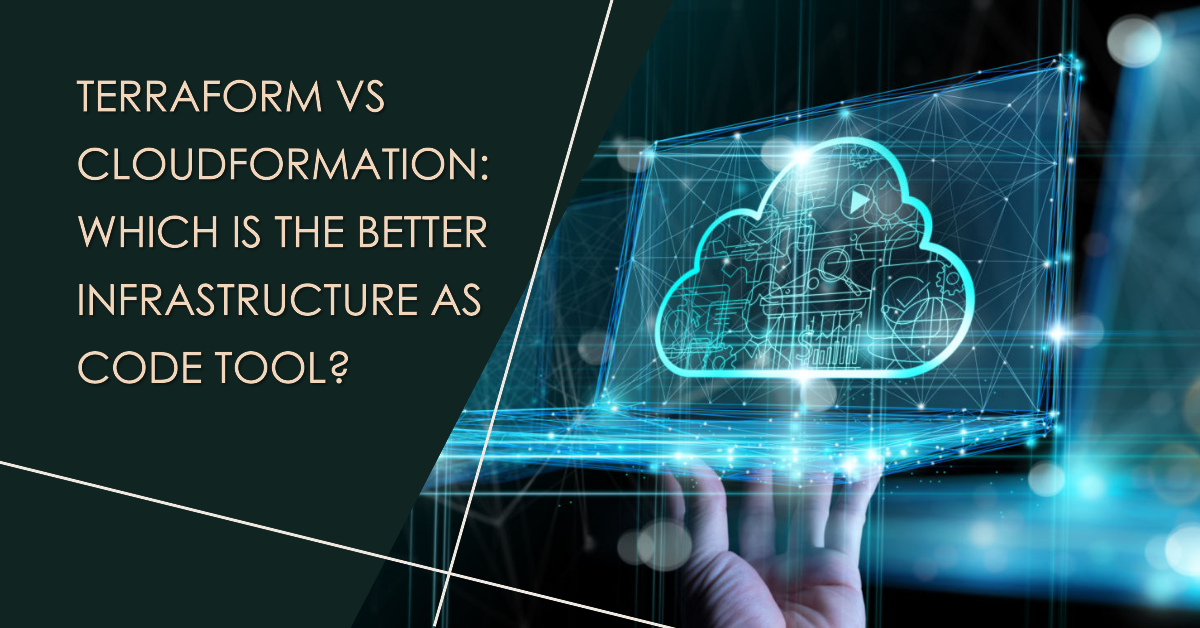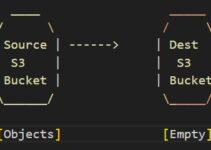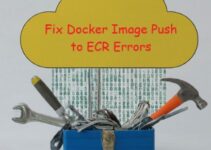Are you planning to migrate to the cloud or already using cloud resources? If yes, then you must have heard about Terraform and CloudFormation. These are the two most popular Infrastructure as Code (IaC) tools used by cloud engineers to automate the deployment and management of cloud resources. However, choosing the right tool for your infrastructure can be a tough decision. In this article, we will compare Terraform vs. CloudFormation and help you choose the best tool for your infrastructure needs.
As businesses move to the cloud, they require an efficient and scalable way to manage their cloud resources. Manually configuring cloud resources can be time-consuming and error-prone. This is where Infrastructure as Code (IaC) comes in. IaC enables you to write code to automate the deployment and management of cloud resources. Terraform and CloudFormation are two popular IaC tools that can help you achieve this goal.
Terraform vs. CloudFormation: Which One to Choose?
Let’s start with a brief introduction to Terraform and CloudFormation.
Terraform
Terraform is an open-source tool developed by HashiCorp. It enables you to define, deploy, and manage infrastructure as code. Terraform uses a declarative language called HashiCorp Configuration Language (HCL) to describe the desired state of the infrastructure. It supports multiple cloud providers such as Amazon Web Services (AWS), Microsoft Azure, Google Cloud Platform (GCP), and more.
CloudFormation
CloudFormation is an AWS-native tool that enables you to define, deploy, and manage infrastructure as code. It uses JSON or YAML templates to describe the desired state of the infrastructure. CloudFormation is tightly integrated with AWS services, making it a popular choice for AWS customers.
Comparison of Terraform vs. CloudFormation
Now, let’s compare Terraform and CloudFormation based on various factors.
| Factor | Terraform | CloudFormation |
|---|---|---|
| Syntax and Configuration | Uses HCL (HashiCorp Configuration Language) | Uses JSON or YAML templates |
| Cross-Cloud Support | Supports multiple cloud providers | AWS-native tool, only supports AWS resources |
| Resource Management | Vast collection of community-supported providers | Limited collection of resources |
| State Management | Flexible state management system | State file stored locally |
| Learning Curve | Steeper learning curve | Simple and easy-to-understand syntax |
| Community Support | Large and active community | Limited community support |
Syntax and Configuration
Terraform uses HCL to describe the infrastructure. HCL is a simple, human-readable language that enables you to define infrastructure in a concise and expressive way. On the other hand, CloudFormation uses JSON or YAML templates, which can be more verbose and complex compared to HCL.
Cross-Cloud Support
Terraform supports multiple cloud providers, including AWS, Azure, GCP, and more. This means you can use the same tool to manage your infrastructure across different clouds. CloudFormation is an AWS-native tool, which means it only supports AWS resources.
Resource Management
Terraform has a vast collection of community-supported providers, which enables you to manage a wide range of resources. It also has a powerful state management system that enables you to manage complex infrastructures easily. CloudFormation has a limited collection of resources compared to Terraform, but it offers a simple way to manage resources using stacks.
State management
Terraform and CloudFormation both use state files to keep track of the resources you’ve created. However, Terraform’s state management is more flexible, allowing you to store the state file remotely and share it with your team. CloudFormation stores the state file locally, which can make it harder to collaborate with others.
Learning Curve
Terraform has a steeper learning curve compared to CloudFormation, mainly because of its complex syntax and configuration. However, once you get familiar with Terraform, it can be a more efficient tool for managing large and complex infrastructures. CloudFormation, on the other hand, has a simple and easy-to-understand syntax, making it a good choice for small and simple infrastructures.
Community Support
Terraform has a large and active community, which means you can find plenty of documentation, tutorials, and plugins to help you get started and also you can get help and support from other users. It also has a vast collection of community-supported providers, enabling you to manage resources that are not supported by the official providers. Terraform also has a plugin architecture that allows you to extend its functionality easily. On the other hand, CloudFormation has limited community support, and its ecosystem is tightly integrated with AWS services, but it offers a comprehensive documentation system that can help you get started.
Pros and Cons of Terraform and CloudFormation
In this section, we will list the pros and cons of Terraform and CloudFormation to help you make an informed decision.
Terraform Pros
- Terraform supports multiple cloud providers, enabling you to manage infrastructure across different clouds.
- Terraform has a vast collection of community-supported providers, enabling you to manage a wide range of resources.
- Terraform has a powerful state management system that enables you to manage complex infrastructures easily.
- Terraform enables you to define infrastructure in a concise and expressive way using HCL.
- Terraform has a large and active community, which means you can get help and support from other users.
Terraform Cons
- Terraform has a steeper learning curve compared to CloudFormation.
- Terraform has a complex syntax and configuration, which can be challenging for beginners.
- Terraform does not have as tight integration with AWS services compared to CloudFormation.
CloudFormation Pros
- CloudFormation is tightly integrated with AWS services, making it a popular choice for AWS customers.
- CloudFormation has a simple and easy-to-understand syntax, making it a good choice for small and simple infrastructures.
- CloudFormation offers a comprehensive documentation system that can help you get started.
CloudFormation Cons
- CloudFormation only supports AWS resources, which can be a limitation if you are managing resources across different clouds.
- CloudFormation has a limited collection of resources compared to Terraform, which can be a limitation if you need to manage a wide range of resources.
FAQs
Q1. Can I use Terraform with AWS?
Yes, Terraform supports AWS and is a popular choice for managing AWS resources.
Q2. Can I use CloudFormation with other cloud providers?
No, CloudFormation is an AWS-native tool that only supports AWS resources.
Q3. Is Terraform better than CloudFormation?
It depends on your infrastructure needs. Terraform is a more flexible and scalable tool that can manage resources across different clouds, whereas CloudFormation is tightly integrated with AWS services and is a good choice for AWS customers.
Q4. Is Terraform difficult to learn?
Terraform has a steeper learning curve compared to CloudFormation, mainly because of its complex syntax and configuration.
Q5. Is CloudFormation limited compared to Terraform?
Yes, CloudFormation has a limited collection of resources compared to Terraform, which can be a limitation if you need to manage a wide range of resources.
Q6. Can I use both Terraform and CloudFormation together?
Yes, you can use both Terraform and CloudFormation together, but it can lead to complexity and duplication of efforts.
Q7. Is Terraform only for cloud infrastructure?
No, Terraform is not limited to cloud infrastructure. It can manage resources in any environment that has a provider plugin available.
Q8. Is CloudFormation only for AWS resources?
Yes, CloudFormation is an AWS service and can only manage AWS resources.
Q9. Can Terraform or CloudFormation replace configuration management tools like Ansible or Chef?
No, Terraform and CloudFormation are focused on infrastructure as code and resource management, while configuration management tools like Ansible and Chef are focused on system configuration and software deployment.
Q10. Are there any costs associated with using Terraform or CloudFormation?
Both tools are free to use, but you will need to pay for the resources and services you deploy using these tools.
Conclusion
In conclusion, both Terraform and CloudFormation are excellent tools for managing cloud resources using Infrastructure as Code. Terraform is a more flexible and scalable tool that supports multiple cloud providers, whereas CloudFormation is tightly integrated with AWS services and is a good choice for AWS customers. Choosing the right tool depends on your infrastructure needs, learning curve, and resources that you need to manage. We hope this article has helped you make an informed decision.
Terraform vs. CloudFormation: Which One to Choose? It’s a tough decision, but we hope this article has helped you choose the best tool for your infrastructure needs. Remember, both tools have their pros and cons, and you should choose the one that fits your requirements.
See also:
How to Install Terraform on Rocky Linux 8 or Centos 8
Steps to Install Terraform on Amazon Linux
Setup AWS VPC Peering with Terraform










